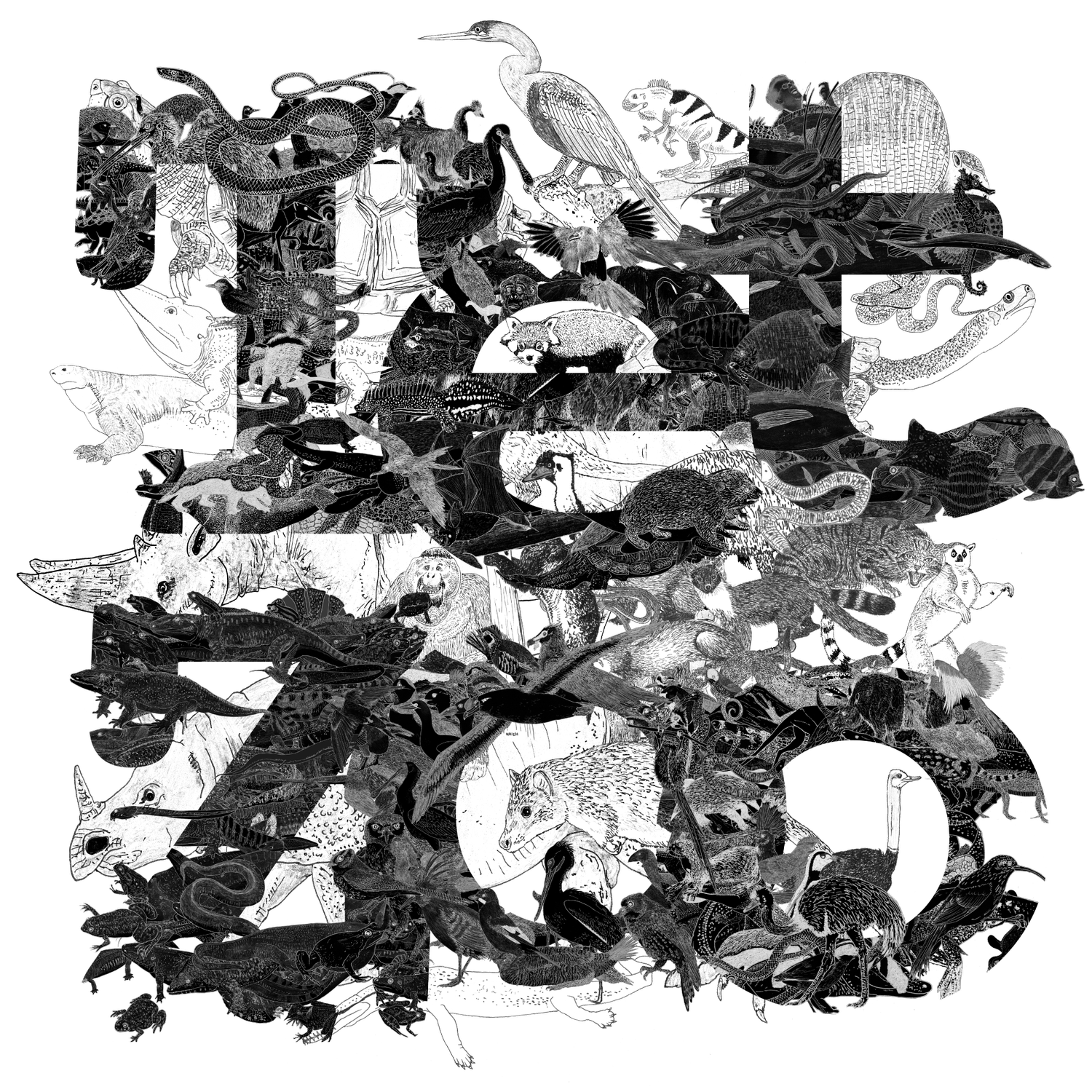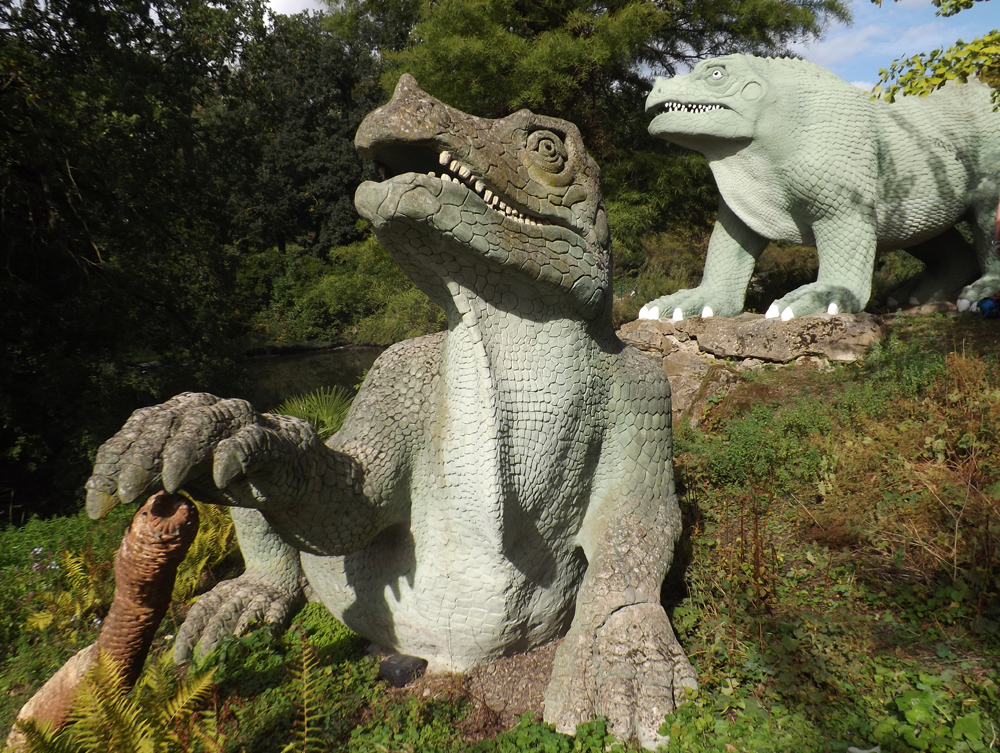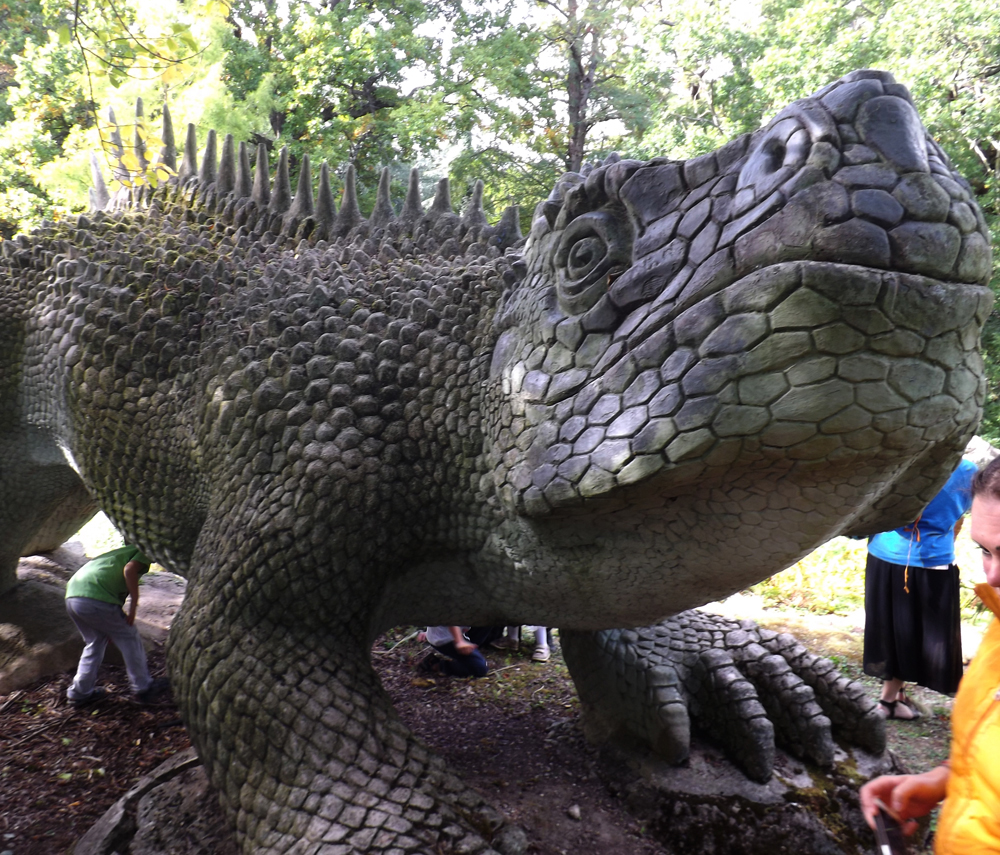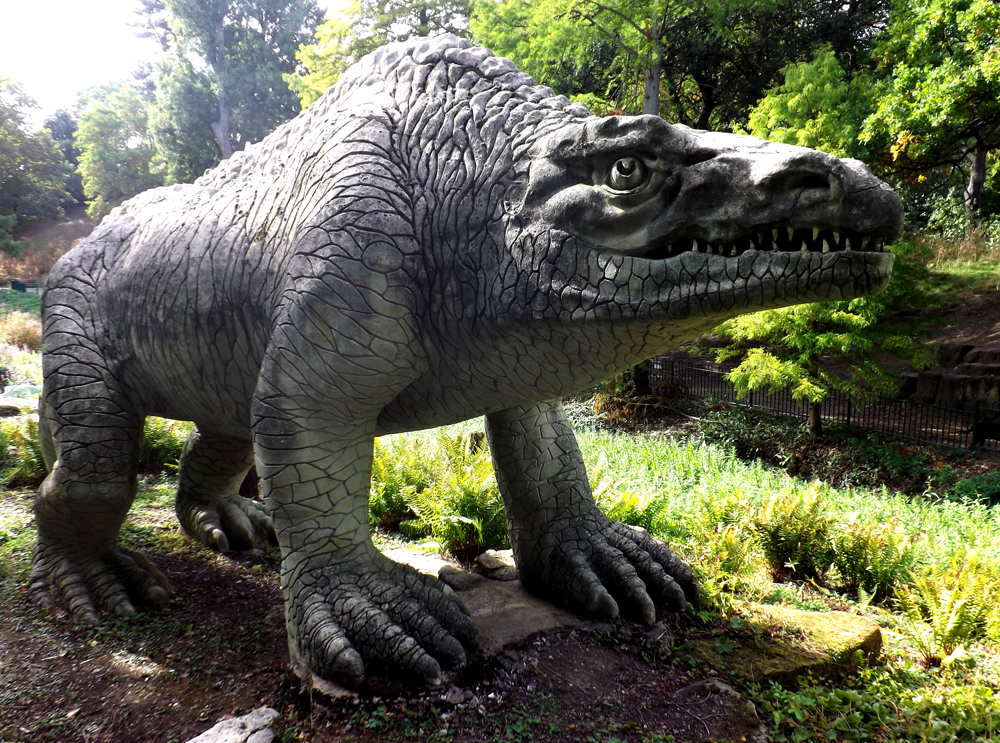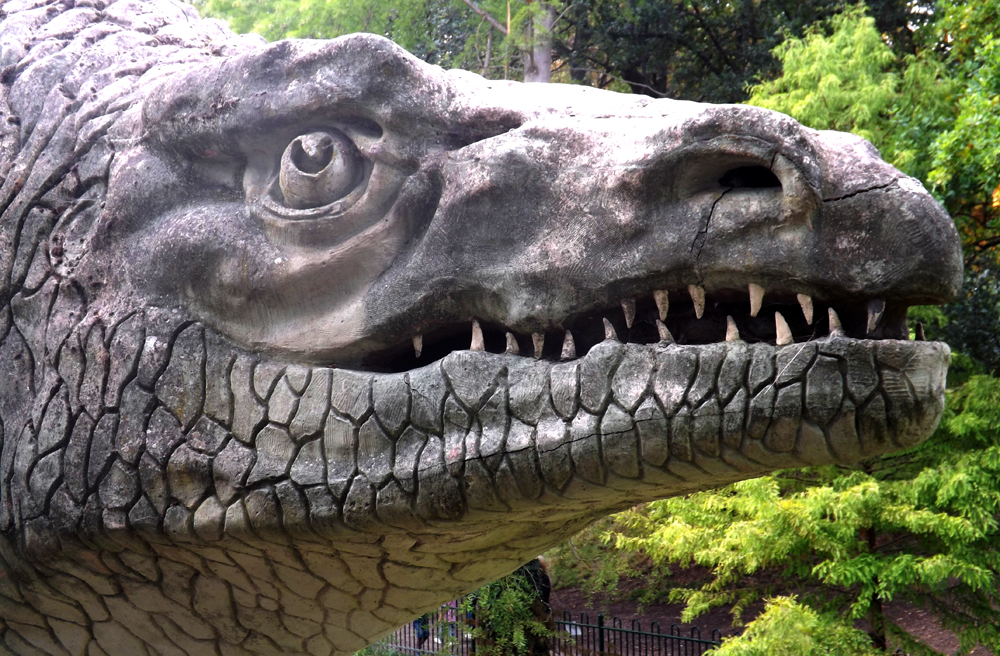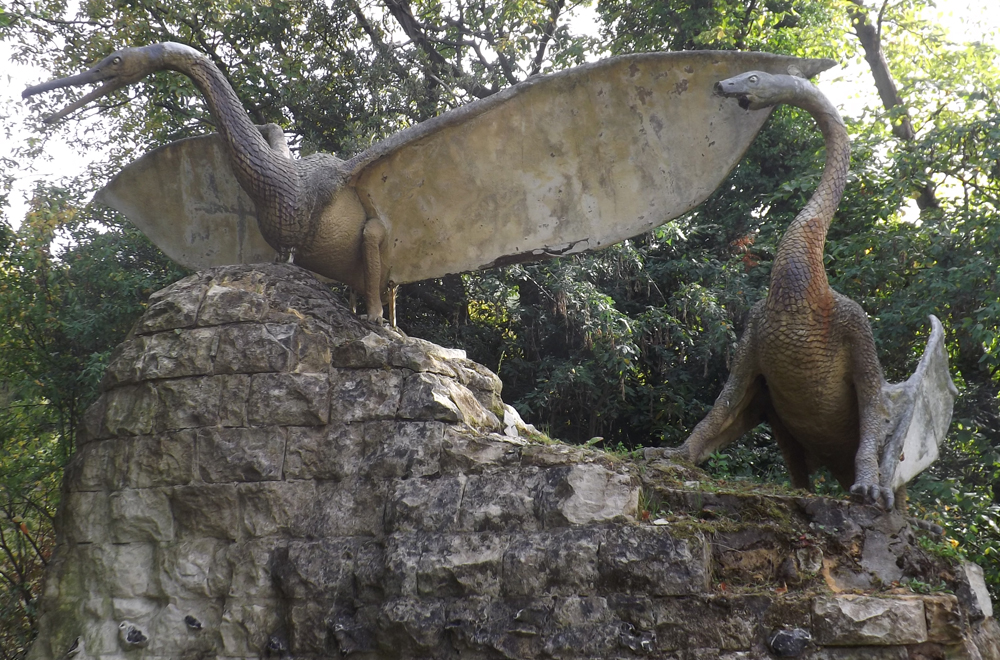Have we discovered one of vertebrate palaeontology’s most famous ‘missing’ specimens? Well, read on…
The Quetz Monograph Lives and Other News on Azhdarchid Pterosaurs
Introducing ‘Unexpected Isle of Wight Air-Filled Hunter’, a New English Theropod Dinosaur
As a regular reader here, you might be familiar with the idea that we’re currently in a Golden Age of dinosaur discovery. More fossil dinosaurs are being discovered, monthly and annually, than at any other point in history, and numerous locations worldwide – even those considered well explored and well understood scientifically – continue to yield new species. Yes, new dinosaurs are found in countries like Malawi, Ecuador and Tanzania, and in Antarctica, but new dinosaurs are also found in the USA, France, Spain and the UK. This week sees the publication of yet another new dinosaur from England. I’m writing about it because I’m one of its describers.
Stop Saying That There Are Too Many Sauropod Dinosaurs, Part 2
A few authors would have it that there are too many damn dinosaurs (TMDD!): that the rich sauropod assemblage of the Late Jurassic Morrison Formation of the continental western interior of the USA simply contains too many species, and that we need to wield the synonymy hammer and whack them down to some lower number. In this article and those that follow it, I’m going to argue that this view is naïve and misguided. You’ll need to have read Part 1 – the introduction – to make sense of what follows here. Ok, to business…
A Multi-Species Nesting Assemblage in the Late Cretaceous of Europe
You don’t have to be an expert on the fossil birds of the Mesozoic Era to know that our knowledge of these animals has increased exponentially in recent years. An extraordinary number of new species have been described, we’ve learnt a great deal about their anatomy thanks to spectacular new fossils – some of which are even preserved in amber – and we’ve gained insights into their behaviour and ecology thanks to discoveries made about their teeth, feathers, stomach contents, phylogeny and the environments in which they lived.
Enantiornithines — here are just a few of them. In-prep montage from my in-prep textbook. Image: Darren Naish.
Among the most important and species-rich of Mesozoic bird groups are the enantiornithines, or ‘opposite birds’, so named because a few aspects of their skeletal anatomy (the way their shoulder and chest bones fit together in particular) are unusual relative to those of modern birds. Enantiornithines are known from rocks worldwide and were present from the start of the Cretaceous until its close 66 million years ago. They might even have evolved in the Jurassic, in which case older members of the group await discovery.
Among the many interesting things discovered recently about enantiornithines is that at least some of them were colonial nesters. In a Naturwissenschaften paper published in 2012, Gareth Dyke, Mátyás Vremir, Gary Kaiser and myself reported a remarkable fossil assemblage: a big, lens-shaped mass of calcareous mudstone (about 80 cm long, 50 cm wide and 20 cm deep) packed with literally thousands of enantiornithine eggshell fragments. A few enantiornithine bones were present as well, but eggshell fragments form 70-80% of the entire mass (Dyke et al. 2012).
Different chunks of the (originally lens-shaped) Oarda de Jos eggshell assemblage. You can see abundant eggshell fragments (a, b) as well as crushed but complete eggs (the image at bottom). Scale bars = 1 cm. Image: Vremir, Dyke et al.
This eggshell mass was found at Oarda de Jos near Sebeş, Transylvania, western Romania and comes from the latest Cretaceous Sebeş Formation (Dyke et al. 2012). Pleurodire turtles, azhdarchid pterosaurs and such dinosaurs as ornithopods and the peculiar Balaur bondoc (which is probably a flightless member of the bird lineage, not a dromaeosaur as originally proposed: see Cau et al. 2015) also come from the Sebeş Formation. I wrote about the discovery and initial interpretation of the eggshell assemblage at TetZoo ver 3, though (sigh) it now appears without any of its images.
The Romanian maniraptoran theropod Balaur bondoc, originally published as a dromaeosaurid, has a number of features which indicate that an avialan position might be more likely, and this is the position it has occupied in several phylogenetic analyses. If it really is an avialan, it has to be interpreted as a big, secondarily flightless member of the group. We explored this idea in Cau et al. (2015). Image: Emily Willoughby.
As described in our 2012 paper, the assemblage is a fairly big deal, since it means that colonial nesting was practised by at least some enantiornithine species, is not unique to crown-birds, and evolved in birds more stem-ward than other colonially nesting birds (Naish 2014).
But as revealed in our new paper, published in Scientific Communications this past week and led by Mariela Soledad Fernández, things turn out to be a bit more complex than we originally thought. Rather than consisting of enantiornithine eggshell fragments and bones alone, the assemblage actually contains eggshell fragments (and probably bones) of several different, additional animal groups. Namely, gekkotan lizards, crocodylomorphs, and a bird different from the enantiornithine otherwise so well represented in the assemblage (Fernández et al. 2019).
Examined under microscopes (A-B show thin-sections viewed with a standard light microscope; C-D views from the SEM), eggshell fragments look like this. These images show the crocodylomorph eggshell in the assemblage. Image: Fernández et al. (2019).
It should be noted to start with that enantiornithine remains dominate the assemblage by far, around 70% of the sampled eggshell fragments belonging to that group (and presumably to the same one species). Sadly, the gekkotan and crocodylomorph eggshell fragments aren’t informative enough to tell us anything particularly interesting about the species concerned, other than that their remains are present. The Oarda de Jos crocodylomorph eggshell is different in thickness and microscopic surface texture from crocodylomorph eggshell fragments reported from the Upper Cretaceous of the USA and Brazil and is most similar to fossil eggs from the Eocene of Colorado, called Krokolites wilsoni (Hirsch 1985). But we don’t have a good handle on what sort of crocodylomorph we’re talking about. After the enantiornithine, its eggs are the most abundant in the sample, forming about 28% of the assemblage. Those artistic reconstructions previously created for the location are thus in error: they really should have at least a few crocodylomorphs in view.
Remember this scene? Produced in 2012 by Julio Lacerda, it depicts the possible appearance of the enantiornithine nesting colony we infer for the locality. Maybe some of the colony did look like this. But it now seems that a few crocodylomorphs and the odd lizard were in the immediate area as well. Image: Julio Lacerda. UPDATE: this is a horribly lo-res version of the image, I aim to publish a better one in time.
The gekkotan eggshell pieces – they have an eggshell morphology termed ‘geckoid’ – have features in common with the eggs of modern geckos, and hence were presumably produced by crown-geckos (Fernández et al. 2019). Beyond that, we can say no more. Less than 1% of the eggshell in the assemblage comes from this lizard, so we’re not saying that its eggs are abundant in the sample.
‘Geckoid eggshell’ in the Oarda de Jos assemblage, as seen via SEM. The images (note the different scales) show (A) a distinct two-layered structure and (B) numerous tiny holes in the prisms of the second later. Image: Fernández et al. (2019).
Similarly, the second bird in the assemblage appears (from microscopic details of eggshell anatomy) similar to crown-birds – more so than to enantiornithines – but cannot be matched with any specific bird group and might represent something new (Fernández et al. 2019). So, we don’t know exactly what sort of bird we’re dealing with. Again, less than 1% of the eggshell in the assemblage is of this type, so it’s rare in our sample.
Piecing all of this together, what does it all mean? If our enantiornithine eggshell assemblage doesn’t involve enantiornithines alone, but also includes the remains of a second bird, a lizard and a crocodylomorph… do we have an example here of a multi-species nesting colony, perhaps one involving so-called parasitic nesting or even communal or cooperative nesting?
Several examples of this sort of thing are known for the modern world. They involve turtles laying their eggs at the edges of crocodylian nests, South American geckos which lay their eggs within the nests of cormorants and gulls, and seemingly harmonious nesting associations involving rheas, tinamous and penguins. Maybe the behaviours listed here occurred in Maastrichtian Romania. Perhaps the gekkotan lizard concerned was cheekily laying its (hard-shelled, perhaps sticky-shelled) eggs at the edges of enantiornithine nests, and maybe the mystery bird and crocodylomorph were non-threatening enough to be tolerated, their nests perhaps being close to those of the abundant enantiornithines (Fernández et al. 2019).
Opportunistic, parasitic, co-operative and harmonious nesting associations exist in the modern world; here’s an example where raptor nests (in this case, that of an Osprey Pandion haliaetus pair) invite the association of passerines, herons and others. Cases like this could well have existed in the Cretaceous. Image: D’Ami et al. (1969).
It may also be that the association we report is not quite as interesting as just described, but more to do with geological and hydrodynamic processes. That is, that the eggshell fragments and bones concerned became associated due to their presence in the same general floodplain area, their remains becoming mixed together by the actions of floodwater and not being all that informative as goes behaviour and ecology. Even if this is true, however, we can at least say that these animals were nesting in the same area and environment, and seemingly in proximity. That alone is interesting, and there are indications from elsewhere in the Cretaceous fossil record that it might have been a fairly regular occurrence.
Our paper is open access (OA) and available here; it’s one of several technical papers I hope to see published in the year. On that note, here’s a reminder that I’m not a salaried academic researcher and that any contribution I make to the technical literature is done in my own time. Thanks to those who support me via pledges at patreon, and please consider doing so if you don’t already.
For previous TetZoo articles relevant to Mesozoic birds, the Late Cretaceous animals of Romania and other relevant issues, see…
A drowned nesting colony of Late Cretaceous birds, May 2012 (now missing all illustrations)
A new azhdarchid pterosaur: the view from Europe becomes ever more interesting, January 2013 (now missing all illustrations)
Bird behaviour, the ‘deep time’ perspective, January 2014
The Romanian Dinosaur Balaur Seems to Be a Flightless Bird, June 2015
Some Azhdarchid Pterosaurs Were Robust-Necked Top-Tier Predators, February 2017
While compiling this list I’ve discovered that essentially ALL of the TetZoo articles on enantiornithines are hosted at sites (ScienceBlogs and SciAm) that have stripped them of their original images. I must therefore make some effort to republish them here, with their pictures. Great, more stuff to do.
Refs - -
D’Ami, R. D., Invernici, F. & Quochi, G. 1969. Animals of Lake and Marsh. Casa Editrice AMZ, Milan.
Hirsch, K. F. 1985. Fossil crocodilian eggs from the Eocene of Colorado. Journal of Paleontology 59, 531-542.
Naish, D. 2014. The fossil record of bird behaviour. Journal of Zoology 292, 268-280.
Up Close and Personal With the Crystal Palace Dinosaurs
Like many of us, I have long enjoyed looking at the Crystal Palace dinosaurs and other prehistoric animal models, created in 1854, still on show more than 160 years later, and providing a remarkable showcase of ancient life as it was imagined at the time. But I’ve only ever seen them from afar. How fantastic would it be to examine them up close? Well…
Caption: you’ve seen the Crystal Palace dinosaurs before (or images of them, anyway), but you might not have seen them up-close like this. Neither had I prior to this very special visit. Image: Darren Naish.
Way back in September 2018, I was fortunate enough to attend the Crystal Palace Dinosaur Days event, part of the Heritage Open Days weekend occurring across the UK on the weekend concerned. I gave a talk and also led a tour around the prehistoric animal models (focusing on the reptiles and amphibians alone). Adrian Lister (of mammoth and Megaloceros fame) led a tour too, Mark Witton gave a talk on ‘Palaeoart After Crystal Palace’, and much else happened besides. I also have to mention the 3D-printed models of the dinosaurs made by Perri Wheeler. How I would love for these to be commercially available: I’m sure they’d be a success. So, it was a great event; well done Ellinor Michel and everyone else involved in the Friends of Crystal Palace Dinosaurs group (follow them on Twitter at @cpdinosaurs) for putting it together.
Caption: Perri Wheeler’s brilliant models of the three Crystal Palace dinosaurs (from back to front: Megalosaurus, Hylaeosaurus, Iguanodon). As a pathological collector of model dinosaurs, I sure would like to own a set, but I also sure would like for these models (or a set very similar to them) to be commercially available. Image: Darren Naish.
The real thrill, however, was not the talks nor the presence of the amazing and sometimes spectacularly good speakers but the fact that we were awarded special, up-close access to the prehistoric animal models. A dream come true. As you’ll know if you’ve visited Crystal Palace or read about it, the models are located on islands surrounded by a snaking waterway. In other words, they aren’t readily accessible. For the duration of Dinosaurs Days, however, a temporary bridge had been erected and – like Lord Roxton striding across a felled tree to Maple White Land – we made the crossing and stepped into a bygone era.
Caption: the amazing, enormous head of the Mosasaurus. Many of the scales on the body were recently repaired as the entire skin across the body was in a poor state. More on the mosasaur below. Image: Darren Naish.
Why erect a bridge to the islands in the first place? Both so that crucial landscaping and gardening can occur, and so that the models can be examined and evaluated for repair. They’re not in the best of shape, you see, and much work needs doing. Indeed, right now there’s a major push to get funding for a permanent bridge that will allow the continual access that’s required. This project only has a few days of fundraising left and there’s some way to go before the target is reached: go here and chip in if you can. You might have heard that the Mayor of London agreed to partly fund the project… as has legendary musician and song-writer Slash, since it turns out that he’s a big fan! I should add that Slash seems to be quite the fan of science in general, his twitter account revealing a definite tendency to use his powers for good.
Caption: the standing Iguanodon was given renovation and a new paint scheme within recent years. Unfortunately, further repair work is already required. Image: Darren Naish.
The reason I’m writing this article is not just to bring attention to this push for funding, but also to discuss and illustrate various of the remarkable details I got to see thanks to this up-close encounter. Before I start, be sure to read (if you haven’t already) the August 2016 TetZoo ver 3 article on the Crystal Palace models. Thanks to the Dinosaur Days event, I should add that I’ve been able to get hold of the guide that Richard Owen wrote to accompany the exhibition, or the 2013 reprinting (Owen 2013) of this 1864 publication (Owen 1854), anyway. It provides at least some background information on why the animals look the way they do.
Caption: head of the reclining Iguanodon. Only a privileged few have seen the head from its left side. Image: Darren Naish.
Caption: again, relatively few people will have seen the reclining Iguanodon from this side. It’s striking how natural, realistic and well-proportioned the model looks in this view: very much like a real animal. Image: Darren Naish.
Caption: Hylaeosaurus was thought by Owen and Hawkins to be an iguana-like reptile with a “lofty serrated or jagged crest, extended along the middle of the back”, though many aspects of the reconstruction were noted as being “at present conjectural” (Owen 2013, p. 18). Image: Darren Naish.
I’ll avoid repeating here the same points I made in my 2016 article but I will repeat my primary take-homes. Namely, that it’s disingenuous and naïve to criticise the models as outdated or as inaccurate, laughable follies, as is sometimes done. They have to be seen within the context of what was known at the time, there has to some acknowledgement of the fact that scientific knowledge has improved over time, and there should also be recognition of the fact that the models are more up-to-date than, and superior in technical accuracy and craftmanship to, the vast majority of modern efforts to portray prehistoric life. In the interests of correcting a mistake made in my 2016 article I should also point out that Crystal Palace is not in Sydenham as I stated, but in Penge. With that out of the way…
Caption: the pachydermal, vaguely bear-like Megalosaurus is actually a composite of information compiled from both Jurassic and Cretaceous theropods. The tall shoulder hump was included because Owen erroneously regarded the tall-spined Altispinax (previously Becklespinax) vertebrae as belonging to the shoulder region of Megalosaurus (Naish 2010). Image: Darren Naish.
Caption: a lot of detail was added to the megalosaur’s face, some of it is superficially crocodylian-like. Note the ominous cracks at the tip of the nose and along the side of the lower jaw. Image: Darren Naish.
It was a real thrill to see the remarkably detailed appearance of the three Crystal Palace dinosaurs: Iguanodon, Megalosaurus and Hylaeosaurus. Each has a very different skin texture, the Megalosaurus being the most unusual in that it doesn’t have the tile-like scales of the other two. Instead, it’s decorated with a crazy-paving-like covering. It’s not clear what Benjamin Waterhouse Hawkins (the designer and model-maker) was trying to achieve here since this is a rather non-reptilian look. Perhaps the aim was to give the animal a fissured skin texture vaguely like that of elephants.
Caption: view of the interior of the standing Iguanodon, with and without flash. The light at the far end of the image is coming in through the Iguanodon’s mouth. Image: Darren Naish.
Holes on the undersides of the Iguanodon and Hylaeosaurus mean that their insides can be inspected. As you can see from my photos, the models look like weird gabled roofs from the inside, numerous metal struts and poles helping to provide support. The hylaeosaur’s original head was removed since its weight was causing the model’s neck to break, and was replaced with a fibreglass copy. So, peer inside the hylaeosaur from beneath and you see the translucent interior of its face.
Caption: a view of the hylaeosaur’s interior! Image: Darren Naish.
Cracks, fissures and damaged sections are visible everywhere, moss invades and covers parts of the hylaeosaur’s flanks (not good if you want the models to persist) and sections of the megalosaur’s nose look like they could fall off at any moment. Similar damage is present on some of the other models, their skin and scales flaking or cracking or looking to be in imminent danger of breaking or falling off. Some substantial (expensive) repair work has been done by the Friends of Crystal Palace Dinosaurs, but much more is required.
Caption: looking into the mouth of the Mosasaurus. “The large pointed teeth on the jaws are very conspicuous; but, in addition to these, the gigantic reptile had teeth on a bone of the roof of the mouth (the pterygoid), like some of the modern lizards” (Owen 2013, p. 11). Image: Darren Naish.
In my previous Crystal Palace article, I discussed the fact that the models reveal a great many complex anatomical details, some of them involving details only familiar to specialists. When you see the models up close, even more such details become apparent. I’m not sure I knew that the mosasaur is equipped with accurate palatal teeth, for example. Owen specifically referred to this feature in the guidebook (Owen 2013). The temnospondyls (‘labyrinthodonts’) have big palatal teeth as well, as they should.
Caption: anterior view of one of the temnospondyls. Check out the accurate palatal teeth. To Owen and Hawkins, this animal was Labyrinthodon salamandroides, a sort of composite based on temnospondyl bones and teeth, and inferences made from croc-line archosaur footprints, thought by Owen and those who followed his work to be made by Labyrinthodon. Image: Darren Naish.
Like the dinosaurs (except the megalosaur), the surviving pterosaurs are fantastically scaly (today, we think that pterosaurs were covered in a filamentous coat, except on their wings, the distal parts of their hindlimbs and their snouts and faces). Unfortunately, the pterosaur with folded wings has recently been damaged, its smashed snout and lower jaw meaning that you can see right inside its head. This reveals a complex internal ‘anatomy’: another reminder that the models weren’t all built to the same plan or in the same style, but that very different approaches were used for each.
Caption: the two large Crystal Palace pterosaurs represent the species known to Owen and Hawkins as Pterodactylus cuvieri (though the possibility that more than one species is represented is raised by Owen’s remarks in the accompanying guide). Unfortunately, one of the models is now badly broken. The two smaller pterosaur models are not currently on display and have had a really unfortunate history: they’ve been vandalised, broken and stolen several times. Image: Darren Naish.
Both big pterosaurs stand atop a small rocky ’cliff’. Like all the geological structures in the park, this is an installation specially created as part of the display. It looks, at first sight, to be made of nondescript grey rock. While looking at it, I began wondering about its specific composition, since we know that the other chunks of rocks in the park aren’t just random lumps of local geology, but transplanted sections of the specific geological unit the respective animal’s fossils come from.
Caption: as per usual, the model up-close - this is the Pterodactylus cuvieri posed with open wings - is a remarkable bit of craftmanship. Pterodactylus cuvieri was named for bones that have more recently been included within the genera Ornithocheirus and Anhanguera, and have most recently been awarded the new name Cimoliopterus. Image: Darren Naish.
Caption: and here’s a close-up of that detail. I absolutely adore the work here; check out all those individual scales. It seems remarkable now to think that Owen and Hawkins really imagined pterosaurs to look like this, but here’s the evidence. Image: Darren Naish.
What, then, are these pterosaurs really standing on? Mark Witton and I examined some freshly broken fragments of the cliff – the rock is chalk! This really shouldn’t have been a surprise given that the fossils these reconstructions are based on come from the English Chalk (Owen 2013), but it was great to see it confirmed. There’s even a line of dark flint nodules, just as there is in real chalk cliffs. These details are surely known to specialist researchers but were news to me.
Caption: broken sections of the ‘pterosaur cliff’ reveal that we’re looking at chalk… which isn’t a surprise, and is exactly what we would expect, but here’s confirmation. You should be able to see a few of the dark, shiny flint nodules too. Image: Darren Naish.
Look – below – at the photo of the teleosaurs. Notice how the arrangement of scales and scutes is highly detailed, and how the animals have been given a scute arrangement that very much resembles that of living crocodylians. As it happens, the arrangement they’ve been given is dead wrong for teleosaurs but it is absolutely accurate for living crocodylians (where dorsal scute arrangement is – mostly – diagnostic to species level). What I’m saying is that I think that Hawkins looked at living Saltwater crocodiles Crocodylus porosus when designing these amazing models, since their dorsal scute pattern specifically matches this species (and, surprisingly, not gharials).
Caption: the two Teleosaurus of Crystal Palace. While compared by Owen with gharials, it’s interesting that the dorsal scute pattern they were given is very clearly based on living crocodiles. As per usual, look at the remarkable amount of well-rendered detail. Image: Darren Naish.
As usual, there’s stacks more I want to say, but time is up. I had such a great time seeing the models up close and I can’t wait to do it again. At the risk of sounding like a broken record, the Crystal Palace prehistoric animals are among the most scientifically and historically important renditions of ancient creatures ever created, and they’re amazing pieces of art, construction and craftmanship to boot. A full, thorough discussion of their ‘anatomy’, backstory, construction and history has, even today, never been published – McCarthy & Gilbert (1994) is the closest thing to it – and much remains to be compiled and discovered.
These models must be preserved for the future. On that note, don’t forget to pledge your support for the bridge project. Crystal Palace and its models will be covered here again at some point in the future, and various relevant projects will be discussed here in 2019 – watch this space!
As should be obvious from these photos, the entire area has become somewhat overgrown recently, and much maintenance is needed. The Friends of Crystal Palace Dinosaurs group are doing what they can, but help is needed. Image: Darren Naish.
For other TetZoo articles on the Crystal Palace prehistoric animals and other relevant issues, see…
The Great Dinosaur Art Event of 2012, November 2012
All Yesterdays: Unique and Speculative Views of Dinosaurs and Other Prehistoric Animals - the book and the launch event, December 2012
Artistic Depictions of Dinosaurs Have Undergone Two Revolutions, September 2014
The Dinosaurs of Crystal Palace: Among the Most Accurate Renditions of Prehistoric Life Ever Made, August 2016
Refs - -
McCarthy, S. & Gilbert, M. 1994. Crystal Palace Dinosaurs: The Story of the World’s First Prehistoric Sculptures. Crystal Palace Foundation, London.
Naish, D. 2010. Pneumaticity, the early years: Wealden Supergroup dinosaurs and the hypothesis of saurischian pneumaticity. In Moody, R. T. J., Buffetaut, E., Naish, D. & Martill, D. M. (eds) Dinosaurs and Other Extinct Saurians: A Historical Perspective. Geological Society, London, Special Publications 343, pp. 229-236.
Owen, R. 1854. Geology and Inhabitants of the Ancient World. Crystal Palace Library and Euston & Evans, London.
Owen, R. 2013. Geology and Inhabitants of the Ancient World. Euston Grove Press, London.
The Last Day of Dinosaurs in the Wild
On Sunday 2nd September 2018, the immersive, interactive time-travelling visitor attraction known as Dinosaurs in the Wild closed its doors for the last time… Yes, Dinosaurs in the Wild is now officially off-show,
Caption: preparing to embark on a last ever tour of Late Maastrichtian western North America. Chrononaut Jasmine Arden-Brown introduces us to the world of Chronotex. Image: Darren Naish.
and if you didn’t get to see it before that fateful Sunday… where were you? I was determined to embark on one final tour, and of course I also needed to go to the grand send-off party and say those sad final goodbyes…
As discussed at Tet Zoo several times already (all at ver 3, I hasten to add), I was scientific advisor for this grand project and thus very much feel that the look, behaviour and biology of the Late Cretaceous animals brought to life for the experience was and is ‘mine’, the MAJOR disclaimers being (1) that a whole team of people actually did the work that resulted in the vision coming to fruition, and (2) any ideas that I have about extinct animal biology or appearance or whatever involve the proverbial standing on the shoulders of giants, and the work and discoveries of a great many other people.
Caption: as with any project of this size and scale, there's the long process whereby models and other props come together over time, and then there's the concept art, the explanatory diagrams, and so on. I've kept a record of as much of this stuff as I could. Image: Darren Naish.
With its fully – indeed, extensively – feathered dromaeosaurs, fuzzy-coated, muscular tyrannosaurs, terrestrial stalking azhdarchid pterosaurs (cough cough Witton & Naish 2008 cough cough), sleek, chunky mosasaurs, balloon-faced ankylosaurs and more (Conway et al. 2012), Dinosaurs in the Wild has – I really hope and feel – introduced a substantial chunk of the human public to a very up-to-date view of the Mesozoic world, and has thus gone some way towards undoing the damage of Jurassic World. No to the scaly, shit-brown, roaring monsters of the past, and yes to a more interesting, biologically plausible and often more surprising view of what these animals were like. Incidentally, Colin Trevorrow visited Dinosaurs in the Wild within the last few weeks, spoke to our associate live action director Cameron Wenn, and said really positive things (Colin and I spoke briefly over twitter).
Caption: here are two of the (normally nocturnal) Dinosaurs in the Wild animals seen in full illumination. At left, the metatherian mammal Didelphodon; at right, the small dromaeosaur Acheroraptor (it never stays still for long, hence the motion blur). Image: Darren Naish.
And did Dinosaurs in the Wild have an impact on the public? I don’t know if I’m allowed to release all the figures, but I will say that many thousands of people attended the experience during its 13 or so months of operation at Birmingham, Manchester and London. Our amazing actors and other staff all became worthy ambassadors of ‘new look’ Mesozoic animals and their biology, and the substantial amount of scientific content included in the show surely introduced the public to a great deal of information they haven’t seen or heard before. All results indicate that we certainly received the sort of feedback and accolade we hoped for: we scored really well as goes visitor feedback, indeed sufficiently well that Dinosaurs in the Wild can be regarded as a world class attraction. The palaeontologists and other scientists and experts who visited were all extraordinarily positive, and thanks indeed to those colleagues of mine who voiced their thoughts in public (Dean Lomax, Mark Witton, Albert Chen, Dave Hone, among others).
Caption: our final goodbye party was a solemn, quiet affair. Obviously. Thanks, Mike. Image: Darren Naish.
Our venues were all great – Manchester’s Event City was certainly quite the sight to behold – but were perhaps not as centrally placed as might be ideal, though there are all kinds of factors controlling where and how a given exhibit can be located.
Caption: a very dangerous box. Working in the Mesozoic is not all that easy. Image: Darren Naish.
Even now, and even after me writing that fairly substantial ‘behind the scenes’ article I published at Tet Zoo ver 3 in July 2018 (and here’s assuming that SciAm haven’t removed it due to an issue with image rights, ha ha ha), there’s a huge amount that could be said about the ‘making of’ this project. As some of you already know, the backstory to the world of Dinosaurs in the Wild is already written-up in an extensive document that we took to referring to as The Bible, but despite efforts I’ve had to give up on plans to get it published. I will be talking about much of the ‘behind the scenes’ stuff at TetZooCon this year (BUY TICKETS HERE), however, and will be bringing The Bible along for those interested in seeing it.
Caption: there's so much to see through the windows that, even after multiple visits, I still haven't seen it all. In this sequence (seen while looking across the Dakotaraptor nesting colony), two female dromaeosaurs engage in a squabble. Image: Kerry Mulvihill.
Huge thanks to everyone at the event last night, and to everyone who made Dinosaurs in the Wild the success it was. Special thanks to producers Jill Bryant and Bob Deere, creative director Tim Haines, the team at Freeman Ryan, to live action directors Scott Faris and Cameron Wenn, to all the amazing people at Impossible, Milk VFX and Crawley Creatures, to every single one of our amazing actors, to our support staff, our sponsors and everyone else. And thanks also to Sam, Simon, Heather and the others who accompanied me on the same, final tour I took just yesterday.
Caption: the temporal field generator is always on. Image: Darren Naish.
Is this really the very end of Dinosaurs in the Wild? Will it re-appear elsewhere at some future date? As you might guess, there are certainly plans that such a thing might happen. Right now, I can say no more. News will be reported here, and on relevant social media streams (I'm at @TetZoo, and check @DinosInTheWild too).
Refs - -
